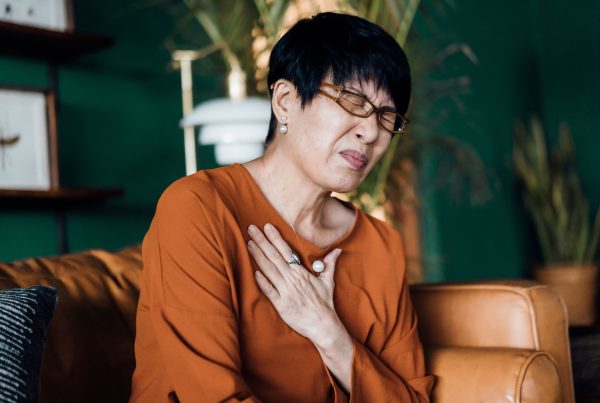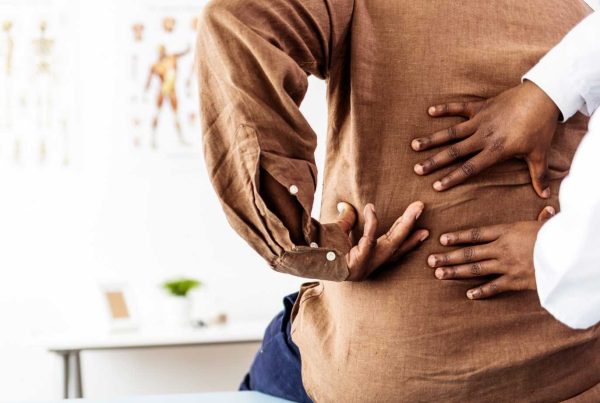As we age, the condition of our spine deteriorates. If you are experiencing pain in your neck or lower back, the multidisciplinary experts in our Spine Center can help you get answers – and your life back.
Contributed by Maria Grabnar, MD | Department of Pain Medicine
A healthy spinal cord, part of the central nervous system, is essential in how well we move, feel and control bodily functions. As we age, the condition of our spine deteriorates. Some of the early warning signs are pain or discomfort in the neck (cervical spine) and lower back (lumbar spine).
Maria Grabnar, MD, is a Pain Medicine physician at MetroHealth Spine Center who treats patients with spinal stenosis, a condition in which the spinal column narrows and may compress the spinal cord. Spinal stenosis often is a result of arthritis or a bulging disc.
Spinal stenosis may occur in all areas of the spinal canal.
Symptoms such as neck pain and weakness in the arms and hands shouldn’t be ignored and could signal cervical stenosis. If you start noticing changes in your hands – weakness, numbness, difficulty with grasping or holding items – or have balance issues, it’s time to seek medical attention.
“Those symptoms could be caused by compression of the spinal cord or nerve roots” , Dr. Grabnar said. During a patient evaluation, she tests strength, sensation, balance, and reflexes and takes note of how well (or not) they can walk.
“All of those details are good clues as to what’s going on and if it warrants further workup,” she said.
If the pain is concentrated mainly in the neck and without other associated “red flag” symptoms, Dr. Grabnar typically recommends working with a physical therapist to strengthen the neck and upper back muscles, which often alleviates pain and helps to restore mobility and function.
If physical therapy and lifestyle modifications don’t make the pain more manageable, Dr. Grabnar sometimes offers injections or procedures as a treatment option.
For patients with additional symptoms or continuing pain, the next step is usually to take a closer look at the spine with an MRI. Results from the imaging test are used to determine the extent of damage to the spinal cord and the best type of treatment to pursue.
Cervical myelopathy, a clinical condition resulting from compression of the cervical spinal cord (a condition most often related to stenosis or “narrowing” of the spinal canal), may be treated surgically to help prevent further progression and help to restore function, Dr. Grabnar said.
Surgery can involve decompressing the elements of the spine that are responsible for the narrowing.
Not everyone is a good candidate for spine surgery. And even after surgery, some patients still experience pain afterwards that is not well controlled. “In those cases, we can consider other minimally invasive treatment options,” said Dr. Grabnar. One option may be spinal cord stimulation, which uses mild stimulation applied to the spinal cord to interrupt pain signals from the body.
While cervical stenosis can’t be prevented, there are steps you can take to slow down its progression and minimize pain and improve function while living with the condition.
“Our lifestyle today is just not conducive for good posture,” Dr. Grabnar said. “Text neck’ commonly occurs due to constantly looking down at your phone or other devices. This can result in a forward flexed neck and posture, which can result in excess strain on the cervical spine, leading to pain.”
In addition to being more mindful of one’s posture, individuals can benefit from continuing exercises learned in physical therapy – especially those that stretch and strengthen the neck muscles – and incorporating them into their daily routine. Maintaining an active lifestyle as possible, addressing weight and sleep issues, and keeping stress in check all can help alleviate symptoms, she said.
Often the same issue that is taking place in the cervical spine (neck) may also be occurring in the lumbar spine (low back), so it is important to have a good medical evaluation as soon as possible.
At the MetroHealth Spine Center, we are the leading expert in spine issues, both simple and complex. Our multidisciplinary team of physicians, surgeons, pain management specialists, and physical therapists work together to provide personalized care.












